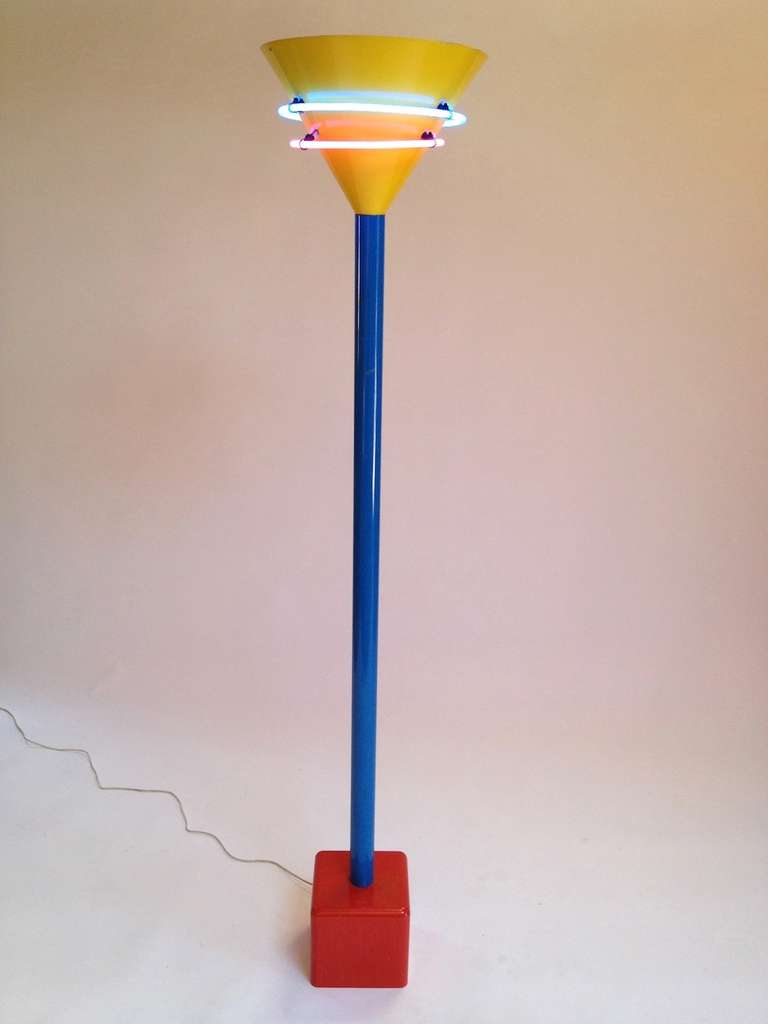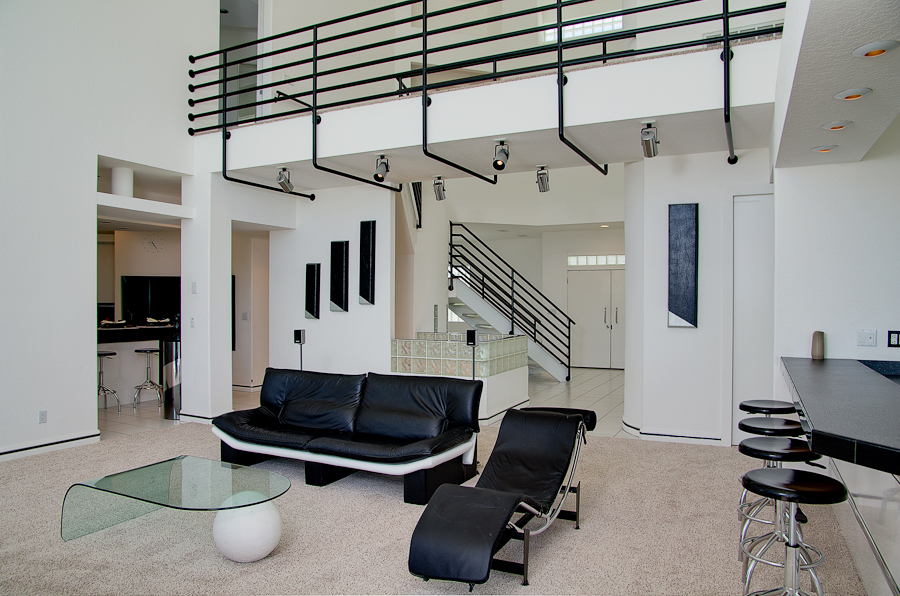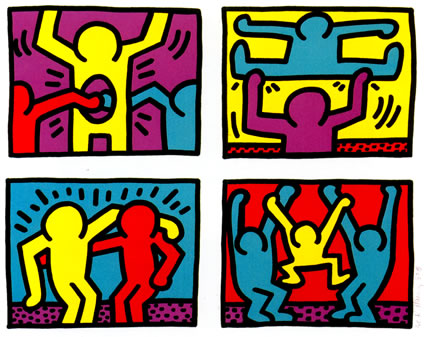
Recently I’ve had the pleasure of striking up a correspondence with Skylar Strickland, an expert on the topic of 1980s design. His vast knowledge on the decade’s best interiors, decor trends and product design quickly became evident, especially when he gave me a glimpse of his extensive collection of design links, images and finds. While growing up in Florida, Skylar lived in a home filled with cutting-edge ’80s treasures. Meanwhile, many of us who were kids during that time grew up in locations where that detailed level of artful 1980s design was… well, let’s just say it wasn’t happening. What was it like being at the center of the decade’s design best? Let’s find out by talking with an expert who isn’t afraid to share his opinion…

Artwork by Patrick Nagel
Thanks for being willing to chat with Mirror80, Skylar! You are a wealth of information on 1980s interior design. Let’s start by talking about your connection to the ’80s. What inspires you to keep tabs on amazing decor finds from the decade of decadence?
I want to clarify that the type of the 80s I’m talking about is the ‘Miami Vice’ style; some call it ’80s Art Deco’ or ‘neon noir’. It’s all about bold geometric shapes, shocking contrasts, bright primary colors, glass block, venetian blinds, Memphis-Milano furniture, neon neon neon! I understand that’s not everyone’s version of the 80s.
80s design really speaks to me on a level that the stuff before and since simply doesn’t. It’s so much more raw. There were no boundaries!
In the 80s, we rejected the aesthetics we had been told we were “supposed” to like, and instead we shot from the hip. We unleashed the creative recesses deep inside our minds.
Gone were the traditional boring landscapes of farmhouses and fields and waterfalls. Instead, we had bold geometry and color which brought the nightclub ethos home so the party never had to end! Gone were the boring impressionist paintings of well-behaved people sitting down for their portrait. Instead, we had the vision of Patrick Nagel showing us what *real* women look like!
We threw conventional wisdom, and all its boring Colonial styling, out the window.
What’s really different is, it didn’t just stop on the canvas. The 80s geometric Art Deco renaissance influenced our clothing and jewelry (remember Swatch watches?), our cars (picture the DeLorean), even the contours of our furniture and household appliances. No other decade let its art have such free reign within the house, the office, public buildings, and society in general.

Album cover art from SelloRekT/LA Dreams
There’s been a recent resurgence of ’80s tropical style–flamingos, palm trees, Miami Vice, etc. Even people who weren’t alive at this time are completely taken with this vibrant 1980s look. You’ve mentioned that you grew up in south Florida. What was it like being a kid in such a prime location?
It really was as good as it looks on TV! Back then, the party never ended.
We were proud to be Americans, the economy was booming, Reagan was going to lead us to victory over the Soviet Union. We had a large and vibrant middle class which virtually lived at the mall, snapping up everything from VCR’s to SLR cameras.
We were so happy and so hopeful, because we had gotten through the turmoil and unrest of the 60s and 70s. Instead of worrying about Vietnam and protests and sit-ins, we could just kick back and ride the wave. It was a celebration of art, culture, fun, sex, music, money, pleasure – with no guilt and no apology! It was like the self-indulgent decadence of New Orleans went nationwide.

’80s “nuon” clock (Image via eBay)
Is there a favorite ’80s memory or two you’d like to share?
Back in 1982, Lee Iacocca – the CEO of Chrysler – started a public campaign to raise money to restore the Statue of Liberty, because its condition had greatly deteriorated.
I remember that I, and the rest of my elementary school class, sent in our allowances one week; we’re talking nickels and dimes here, whatever we had.
I was so proud that I cried on Independence Day weekend in 1986, when the restoration was complete and it was unveiled. Mr. Iacocca and President Reagan made me feel so grateful to be an American, and I was so proud knowing I had helped!
On a different note: In 1980, Miami suffered the McDuffie race riots. It was so bad that the federal government declared Miami a disaster area. Large parts of the city had to be rebuilt or renovated, so this is part of why Miami was so hip-looking back then–a lot of the earlier stuff had been destroyed, and what it was replaced with was, of course, “80s stuff” – because that’s what was current at the time. So I think that Miami’s being on the cutting edge of 80s design was somewhat unintentional in that way.

Artwork by Jane Davis Doggett
1980s interior design is finally starting to get the spotlight it deserves, although there’s still a long way to go… Why do you think it’s taken so long for the design of this decade to truly be appreciated?
Not a lot of time has passed. “Mid-century modern” design, heralding back to the I Love Lucy ‘atomic age’ of the 50s and early 60s, has become very popular in the 2000s. But was it popular in the 80s, when it was 30 years bygone? Absolutely not. I don’t expect the 80s, which are now themselves 30 years bygone, to be treated any differently. Wait another 20 years, and all the hipsters and 80s children will be bringing it back with a vengeance 🙂
Also, 80s culture (and art and music) was all about partying – and I don’t think America’s really in a partying frame of mind right now, withthe broken economy and all. ‘Nuff said.
Oh, and the same ‘professional art critics’ who hated the 80s because it threw their conventional wisdom and fancy educations out the window in favor of pure unbridled creativity have spent the last 20 years ridiculing 80s design and anything associated with it in an attempt to make sure it stays dead. But like they say, “fads go in cycles”…

A Memphis knock-off halogen torcherie lamp (from 1stdibs.com)
Tell us about your favorite ’80s design styles…
Memphis-Milano leaps to mind. Ettore Sottsass and his Memphis Group single-handedly shaped the visual design of an entire decade.
There was a LOT of stuff back then – furniture, jewelery, artwork, phones, clocks, lamps, dinnerware – which were ‘knock-off Memphis’. The emphasis was on geometry, contrast, and color.
80s interior design was actually a version of minimalism. You’d start with a monochrome all-white room (white plush carpeting, white walls, white popcorn ceilings), and then bring the color in with the furniture and the artwork. There were none of the ‘earth tones’ popular now; the emphasis was on contrast (black, chrome, and white), accented with bold primary colors (red, yellow, and blue). It’s the style today to add color to rooms by painting the walls – like blood red dining rooms and sunny yellow bedrooms and warm pumpkin-orange kitchens – but back then, monochrome was in vogue. Everything, often including the flooring, was snow white…color
came from the “stuff” you put into the room, not the room itself.

’80s minimalist design showcasing the white-black-chrome look (image via Jim Sykes)
Building exteriors themselves were typically either snow white as well, or light tropical pastel colors (especially here in Florida). But at the end of the day, nothing says “80s” like snow white with jet black accent trim.
Residential architecture itself was influenced by the geometric stylings of The Memphis Group. Vaulted ceilings, which became very popular in the 80s, added a triangular geometric element to the room. Windows, skylights, and doors were often installed without casing; this “squared-off” lookgave an additional geometric dimension to things.
I see a lot of young people whose concept of the 80s is all about bright neon colors, like we all lived inside a big ol’ Crayola box. True, bright color was a big design aesthetic back then – but that’s only 50% of the story. The other equally important thing was CONTRAST – black and white, light and dark. We played with light a lot back then. Sure we used neon tubing for colorful lighting. But we also used skylights and aluminum mini-blinds on the windows for creating artistic shadows, and light-and-dark contrasts which played well with the white-monochrome-room aesthetic. Glass block windows, which surged in popularity in the 80s, add a lifelike sun-and-shadow contrast to rooms too. Bronze-tinted window glass was common too, and added yet another level of visual depth to a room.

Artwork by Walt Curlee
A chic 80s living room was about 90% contrast and only 10% color. The most square footage – the ceiling, the walls, the floors – was white with chrome and black accents. A lot of the furniture was too. The splashes of bright color came from the artwork, the sculptures, the accent trim on the furniture, the lamps, the “stuff”. Bright color was a minor splash, not the whole room. You can’t have 80s décor without the stark black-and-white contrast.
A stylish 80s kitchen, for example, was often all-white with black appliances. Refrigerators, stoves, and dishwashers were smooth glossy glass-like black with chrome edging trim. That was the hit style of the 80s, like ‘avocado green’ or ‘harvest gold’ were in the 60s and 70s. You can do a lot more to “80s-ize” a house with white, black, and chrome than you can with Crayola colors. Speaking of kitchens, no one had heard of granite countertops back then. Square-edge Formica was the “in thing”.
Mirror, as a building material and as ‘wall art’, was very important back then too. It meets the “chrome” criteria, and it also plays directly to the artistic visions of form, geometry, and contrast.

Artwork by Keith Haring
Can you give us a quick blow-by-blow of how a typical 80s-chic room might be designed?
FLOORING: White plush cut-pile carpeting, or golden/honey oak hardwood. Parquet was popular too. Plush cut-pile carpeting, which was the top-seller of the 80s, is known for displaying every footprint and vacuum mark very clearly, adding a cool multidimensional effect to the floor (same concept as a striped lawn).
WALLS: Snow white, with floor-to-ceiling mirror panels on one wall.
CEILING: High, vaulted, snow white, w/ popcorn texture applied.
WINDOWS & DOORS: Pair of rectangular skylights, with glass block windows and a sliding glass door w/ bronze-tinted glass. No casing around windows. Chrome hardware.
ARTWORK: Something by Patrick Nagel on one wall, and by Keith Haring on another. Throw in an abstract geometric sculpture of the female form.
FURNITURE: Memphis-Milano. Add a glass coffee table and potted Kentia palm for good measure.
LIGHTING: Neon “wall art”. Neon/halogen combo torchiere. Top it off with some polished chrome can sconces, and Casablanca’s “Venus Halo” ceiling fan.
For all the fans of the 80s who weren’t around back then, here’s the best advice I can give you: buy the entire DVD set of Miami Vice, and then sit down and watch every single episode, from every season. That will give you a better understanding of 80s art than anything you could learn in school, or from a book, or from me. It’s the absolute mecca, the epitome, the quintessential and archetypal example of 80s design. It’s representative of the 80s design aesthetic in a way nothing else is.

Sandy Mountains Swatch Watch (image from SwatchAndBeyond.com)
You’ve mentioned having an affinity for under-appreciated items like ’80s ceiling fans and smoked Plexiglas. Are there any other items that you feel deserve a second look?
The 80s were unique for having an aesthetic which jumped off the walls and into all parts of the home. For the first time (before OR since), we saw the stylings of pop art reflected in our cars, our clothing, our jewelry, our electronics, our light fixtures, our appliances. No other decade let pop art determine how a vacuum cleaner or torchiere floor lamp was going to be designed. Think how easy it is to look at something and say “oh, that’s so 80s”. I can confuse 70s stuff with 60s stuff, and 60s stuff with 50s stuff…but 80s stuff? It’s very unique, very identifiable.
Here’s a thought experiment: Do a Google search for “Memphis Milano”. Could you – or anyone you know – confuse what you see with being from ANY other decade? Does any adult need to be told “that’s from the 80s”, or do they know it seemingly instinctively, even if they’re not an aficionado of the decade? Do you think the same “average Joe” would be so quick to answer, and so often accurate, in determining whether a mid-century item is from the 40s, 50s, 60s, or 70s?
You mentioned ceiling fans; they exploded in popularity during the 80s. No 80s house was complete without them, in the same way that no 2000s house is complete without brushed nickel or oil-rubbed-bronze fixtures. Back then, ceiling fans were considered exotic, and evoked a tropical theme. Tropical themes were very chic back then, as you often point out here on Mirror80. Craigslist is a great source for 80s ceiling fans; note that most ceiling fans had four blades, not five.

A Deco wall sconce (image from LightingDirect.com via Decoist)
You’re also an expert on ’80s lighting. Are there any lighting styles or items that ’80s enthusiasts should be sure to note?
Everyone says that track lighting is a symbol of the 80s. Maybe that’s true for the same people whose concept of the 80s involves wood paneling, and brass hardware, and lace and chintz everywhere. While that may be rural America’s concept of 80s design, it – and track lighting too – wasn’t a big part of the ‘Neon Noir’/Miami Vice/80s-deco ethos.
Back then, overhead lighting was out. Indirect, diffuse lighting was in vogue – hence the proliferation of wall scones, torchieres, and neon “wall art”. Nothing says “80s” to me like diffuse neon lighting streaming through aluminum mini-blinds, projecting the shadow of those slats on the wall. Again, we were bringing the nightclub aesthetic everywhere, and nightclubs aren’t big on bright overhead lighting. In the 80s, that stuff was the domain of office buildings and retail outlets.

The Wakita Memphis Series Clock (via Etsy)
This next question is for all of the collectors out there… In your opinion, what are some of today’s top sources for ’80s decor?
eBay and Etsy are the best Internet resources. Online is best, because you can get stuff from *everywhere*, instead of just locally. If you live in a place where the Miami Vice aesthetic was not popular in the 80s, like Kansas, then the Web is your friend.
If you live in a place where people strive to stay modern, like south Florida or coastal California or New York City, then thrift stores
sometimes have good stuff. Habitat for Humanity’s “Re-Store” locations stock used donated furniture and appliances, while traditional thrift stores like Goodwill and Salvation Army are mostly about clothes.
2. “Born in the U.S.A.” by Bruce Springsteen (1984).
3. “Free Fallin'” by Tom Petty (1989).
4. “Islands in the Stream” by Kenny Rogers & Dolly Parton (1983).
5. “9 to 5” by Dolly Parton (1980).
There were a lot of other great shows I can’t think of right just now; same goes for the preceding question about movies.

Memphis-Milano stools (image from Dennis Zanone’s Memphis-Milano Tumblr)
Thanks so much for sharing your expertise with us, Skylar!
What a fantastic honor to be asked to participate!
To everyone who remembers the 80s fondly, I lift a glass with you in honor of some of the best years of our lives! What good times they were…
To those who weren’t there personally but who love the 80s aesthetic nonetheless, let me congratulate you on looking beyond your own experiences and broadening your horizons by taking an interest in a great part of American history! I can’t say it enough times: watch Miami Vice! That’ll teach you more about 80s design than anything else ever could.
Thanks!











Spectacular interview!! Really well done.
Great to see so many theories I’ve held true reinforced too!
Hey there, great to hear from you!
I’m very curious what theories you’re talking about that I reinforced?
Hallelujah! You’re preachin’ to the choir Skylar. I totally agree. Everyone always says, ” a new coat of paint will do wonders!” Fact of the matter is that the walls should always remain neutral. That way the focus can remain on the artwork and whatever other colorful accents you throw in (without getting too confusing to the eye). This is a wonderful aesthetic that really made 80s interiors pop. Nothing else before or after the 80s has ever been able to get it quite right. Here’s to contrast!
Thanks for your comment! Indeed, swimming in bright color distracts the eye from appreciating the art (and art includes furniture, lighting, and architecture) – and 80s design was all about art.
Fantastic interview, i’ve learnt so much! god bless the 80’s